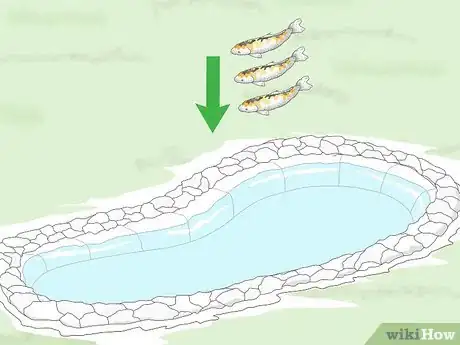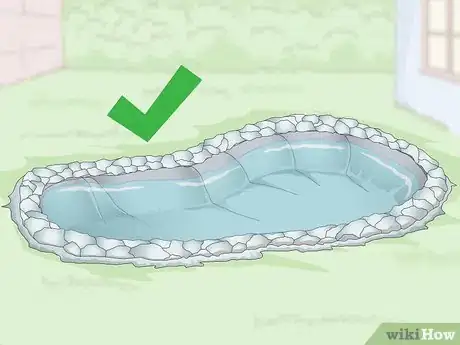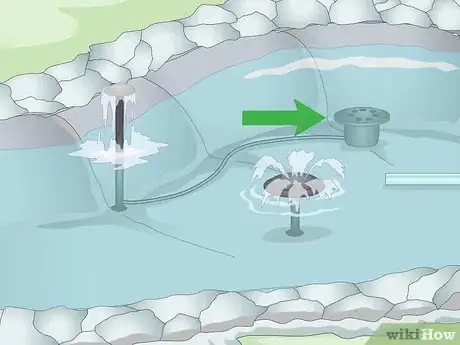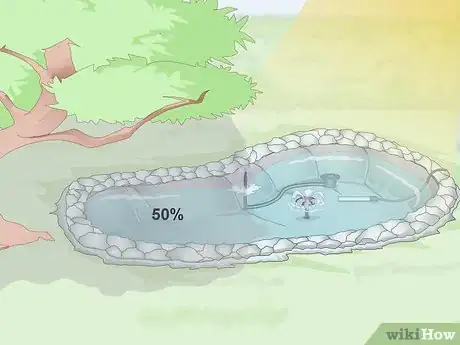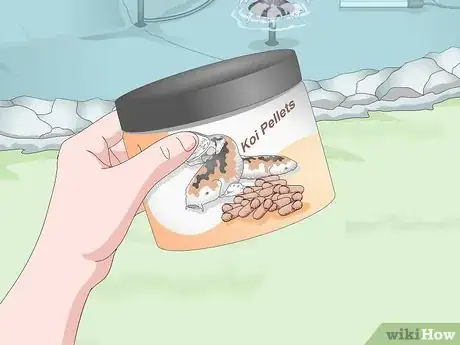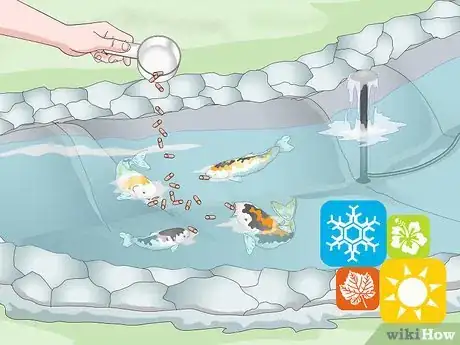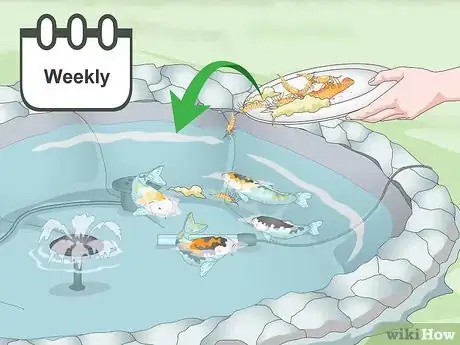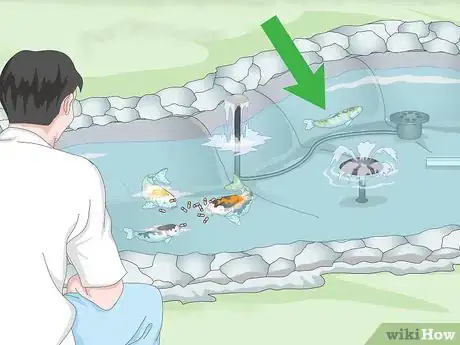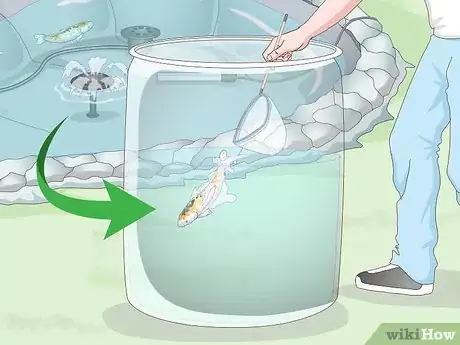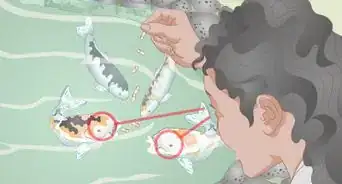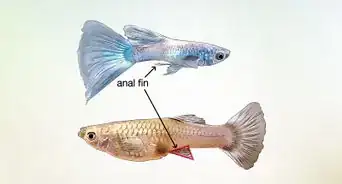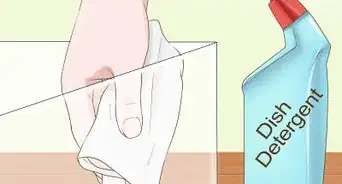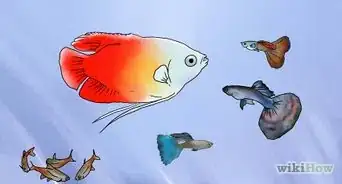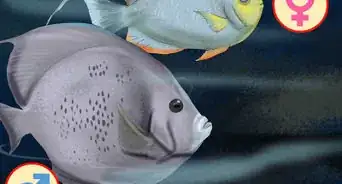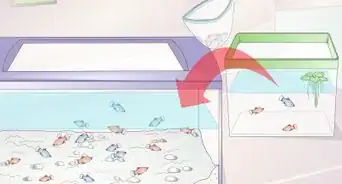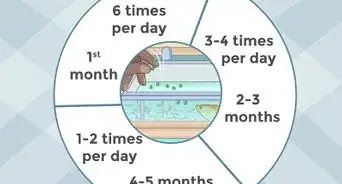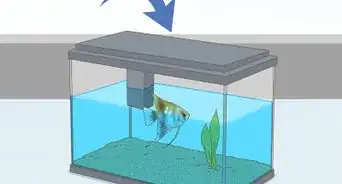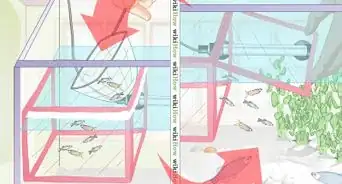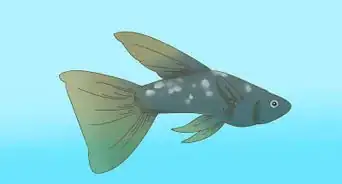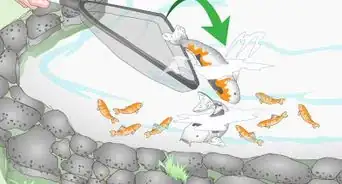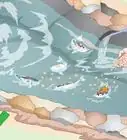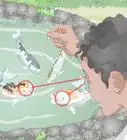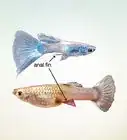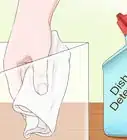This article was co-authored by wikiHow Staff. Our trained team of editors and researchers validate articles for accuracy and comprehensiveness. wikiHow's Content Management Team carefully monitors the work from our editorial staff to ensure that each article is backed by trusted research and meets our high quality standards.
wikiHow marks an article as reader-approved once it receives enough positive feedback. In this case, 95% of readers who voted found the article helpful, earning it our reader-approved status.
This article has been viewed 118,232 times.
Learn more...
Those colorful fish you frequently see in large ponds in Japanese restaurants or shopping areas are becoming increasingly popular. They're often used as the centerpiece of a backyard garden. The brightly-colored fish are called koi, and they are the result of selective breeding of German and Asian carp. If you are considering raising koi, begin by selecting a size and location for your koi pond. You’ll also need to keep the koi in good health and to feed them and care for them.
Steps
Choosing and Situating a Koi Pond
-
1Determine how many koi you plan to raise to determine the pond size. Do this before purchasing a koi pond. As a rough estimate, figure that your koi pond will need to contain 300 gallons (1,100 L) of water per fish. So, for example, if you plan to have a dozen koi, you'd need a pond that contains at least 3,600 gallons (14,000 L) of water.[1]
- You may want to increase your estimate by 3-4 fish, so that you can add additional fish later without exceeding the pond's size limit.
-
2Select a koi pond that suits your backyard. Koi are too big to be kept in a glass aquarium and need to be raised in a large outdoor freshwater pond. A good rule of thumb is that, if you plan to keep fish in the pond year-round, the koi pond should be at least 4.5 feet (1.4 m) deep.[2] Purchase a koi pond at a large pet store or koi specialty retailer. The pond will need to be professionally installed by pet-store employees unless you're planning to build your own koi pond.
- If you'll only keep koi in the pond seasonally (e.g., spring through fall), the pond only needs to be 1.5 feet (0.46 m) deep.
- Having a shallower pond would be a good option if you’re planning to sell off your entire stock of koi fish in the fall. Some people also like to eat koi, so choose a shallow koi pond if you want to eat your koi stock during the summer and fall.
Advertisement -
3Maintain the water temperature between 60–75 °F (16–24 °C). Koi thrive in this range of temperatures. Unless you live in a temperate area with little seasonal temperature variation, purchase a thermometer and heat source and install them in your koi pond. This is especially important to have in place come winter, if you're keeping koi in your pond year round.[3]
- Find these items at any large pet-supply store or fish specialty store.
-
4Keep the water fresh with aeration pumps and filters. Koi extract oxygen from the water they swim in, and pumps and filters will ensure that the water in which your koi live stays fresh and oxygen rich. Having clean water will also help the koi stay in good health.[4]
- Purchase a large, koi-pond-specific pump and aerator at a specialty fish store.
-
5Locate the koi pond in a place where it will be 50% shaded. Koi do well when they’re exposed to both sun and shade. This allows them to regulate their own body temperature and to keep from becoming too hot or cold. So, locate the koi pond partway under a large shade tree or next to a backyard shed so that the pond is, on average, half in sun and half in shade.[5]
- If you place the pond in a location where it receives full sun, the fish could become overheated in the water and potentially die.
Obtaining and Feeding Koi
-
1Purchase koi from a koi farm or breeder. You can purchase koi at online retailers, at specialty koi farms, or (in some cases) at pet stores. Healthy koi are active and swim horizontally in the water, with the fins on their back facing upwards, not tilting to the side. If possible, inspect your fish before purchasing them. Make sure they’re active and feed during mealtimes in the pond before you purchase the fish.
- Purchasing healthy fish is more important than purchasing koi with a pretty pattern.
-
2Purchase koi food pellets at a local pet store. Koi pellets are specially manufactured to give koi the blend of nutrients and minerals that they need to thrive in captivity. The pellets also contain healthy vitamins and anti-oxidants to help boost the koi’s immune systems. Purchase specialized koi pellets at any large pet store or fish-specific supply store.[6]
-
3Feed your fish more or less food in warmer and cooler seasons. In warmer weather, you can feed a pond full of koi 4–5 handfuls of food 3-4 times per day. In cooler weather, you only need to feed your koi once per day. Koi have a very small digestive tract, so you need to control the amount of food you give them. If you notice leftover food on the surface of the water after 1 minute, you’ve given the fish too much food. Observe the koi's eating patterns and adjust the amount of food that you give them accordingly.[7]
- It is easier to kill a koi by overfeeding than by underfeeding. When in doubt, feed the fish less or none at all.
- Koi enter a hibernation process when the water temperature falls below about 46 °F (8 °C). It is not necessary to feed koi when water temperatures are this low.
-
4Give koi table foods once a week for a treat. Koi are omnivorous fish and so can eat a large variety of foods. To give the fish a treat once a week or so, toss them a handful of cereal, chopped vegetables, worms, or sliced fruit. However, avoid giving koi bread, since it can harm their digestive tracts.[8]
- These kinds of supplementary foods should be considered an addition to their diet and never used as a substitution for the pellets.
Treating Health Problems
-
1Avoid adding any cleaning products with additives to the pond. Pet-store staff may encourage you to consider using koi pond water additives. Examples of additives are products designed to keep the water healthy and free of pests. However, these products can harm koi and could potentially kill your otherwise-healthy fish.[9]
- Try looking for cleaning products that say "all-natural" for a fish-friendly option.
- If you find that you must use additives in your koi pond (e.g., to kill off severe algae), find a product with as few non-natural chemical additives as possible.
-
2Watch koi when you feed them to note any emerging health problems. Common problems can be noted by watching the koi at feeding time. If a koi seems lethargic, doesn’t feed with the other fish for 2–3 days in a row, or secludes itself from the rest of the fish in an alcove, it may have a health problem. Koi are also vulnerable to parasites or to bacterial infection if they have received an injury. Koi that have a parasite will often rub their sides along the pond or lay on the bottom of the pond.[10]
- The primary way to maintain the good health of your koi is through keeping the pond water clean.
-
3Quarantine sick koi in a separate body of water if possible. If a koi acts lethargic or doesn’t eat for more than 3 days in a row, it’s probably sick. At that point, if possible, quarantine a sick fish in a separate body of water. For example, you could quarantine a fish in a large plastic container or a separate, smaller pond, if you happen to have one on your property.
- If you don’t quarantine the koi, a single sick fish can easily infect all of the koi in your pond.
-
4Consult a small-animal vet if the koi does not get better. If the fish does not seem to be getting healthier (e.g., if it continues not to eat), consult a veterinarian who treats fish and other types of exotic pets.[11] Since it would be difficult to transport your fish to a veterinarian's office, the vet will most likely need to make a house call. The vet may advise you to change the fish’s food or to use a different type of water or air pump.
- Not all small-animal veterinarians work with fish, so contact a few in your area until you find one who has experience with koi.
Community Q&A
-
QuestionCan you put koi in with large goldfish
 Community AnswerIt depends in how large the goldfish are and how large the pond is. If the koi grow too large, they may eat your goldfish.
Community AnswerIt depends in how large the goldfish are and how large the pond is. If the koi grow too large, they may eat your goldfish. -
QuestionI heard that you don't need to feed koi fish because they eat the algae off the pond and that also keeps the water clean. Is this true?
 NickCommunity AnswerIt depends on how many koi you have and how big of a pond you have. If you only have a couple with a large pond then they will keep the water clean of algae by eating it, but if you have more then a few with a smaller pond then you will need to buy the koi pellets and feed them at least once a day because the algae couldn't keep up with the koi and they would starve.
NickCommunity AnswerIt depends on how many koi you have and how big of a pond you have. If you only have a couple with a large pond then they will keep the water clean of algae by eating it, but if you have more then a few with a smaller pond then you will need to buy the koi pellets and feed them at least once a day because the algae couldn't keep up with the koi and they would starve. -
QuestionI have saved some of our koi eggs (roe). Must the water be filtered and clean for them to hatch and stay alive? How long will it take?
 ImbisaleCommunity AnswerThe water MUST be filtered and clean for them to live and it takes about 2-3 weeks for them to hatch.
ImbisaleCommunity AnswerThe water MUST be filtered and clean for them to live and it takes about 2-3 weeks for them to hatch.
References
- ↑ https://morningchores.com/fish-farming/
- ↑ https://koistory.com/raising-koi-fish/
- ↑ https://koistory.com/raising-koi-fish/
- ↑ https://koistory.com/raising-koi-fish/
- ↑ https://koistory.com/raising-koi-fish/
- ↑ https://koistory.com/koi-fish-feeding/
- ↑ https://koistory.com/koi-fish-feeding/
- ↑ https://morningchores.com/fish-farming/
- ↑ http://worldwideaquaculture.com/aquaculture-fish-farming-how-to-raise-koi-in-your-backyard-pond/
About This Article
To raise koi, buy a koi pond that's at least 4.5 feet deep and wide enough to accommodate the number of fish you want to raise. Next, place the pond in a shady area, add water, and keep the water fresh with aeration pumps and filters. Koi thrive in water temperatures between 60 and 75 °F, so install a heat source if your climate doesn't provide adequate warmth year-round. Purchase your koi from a koi farm or breeder and feed them 4-5 handfuls of koi pellets 3-4 times per day. For tips on spotting symptoms of illness in koi, read on!
